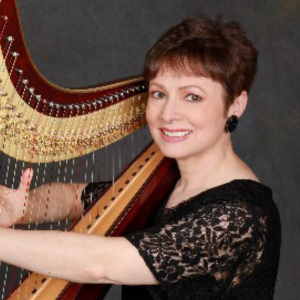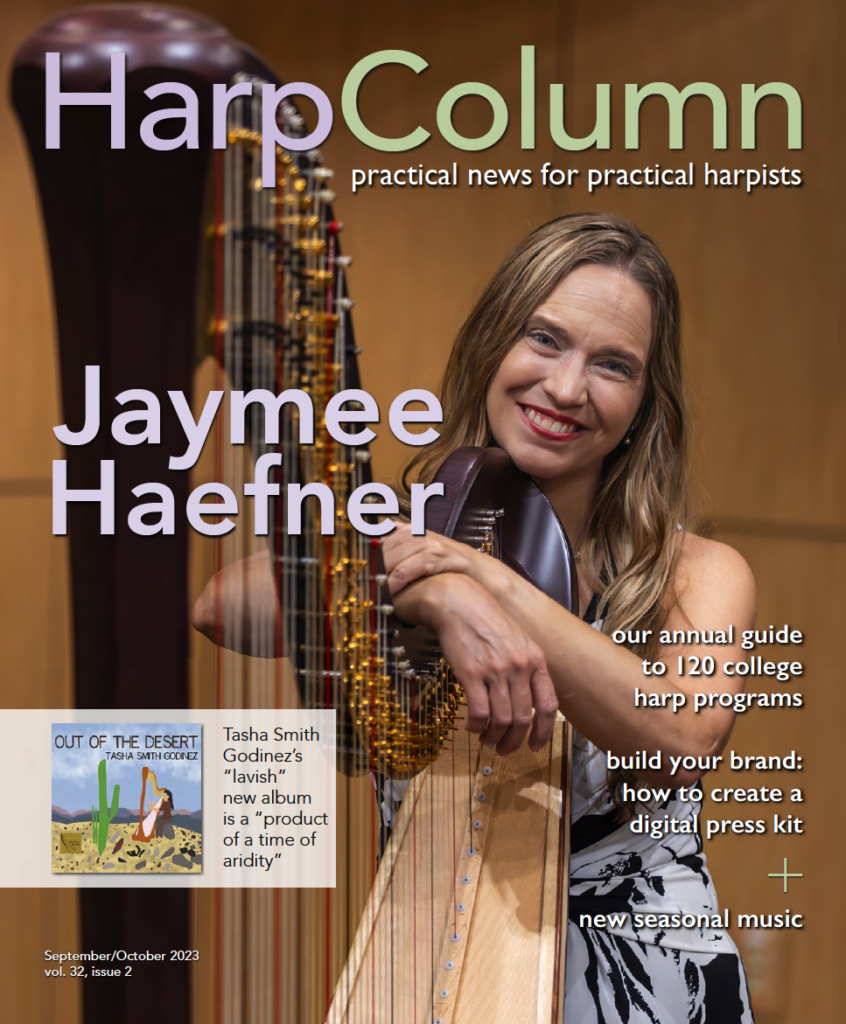
During my career I have sold five of my pedal harps, one for a friend, and several lever harps. Ensure your harp is in its very best condition. Remember you’re competing with new harps and other comparable used harps. Install all new wires and strings and keep them well-tuned. Use a soft brush to dust the action, and dust the entire harp. If there are surface blemishes, see if you can have them repaired or touched up during regulation.
Have it regulated by a reputable harp tech, and pay that person for a professional appraisal. Buyers can’t argue with appraised value. List a price at or slightly below that figure, but give yourself room to negotiate. If you include accessories like tuning key, bench, cover, cart, extra strings, trunk, music, tuner, etc., be sure those items are clean and in as good condition as possible.
Be polite and reasonable but firm. Decide in advance if you are willing to ship the harp or not and who will pay. Have two copies of a contract ready (“as is, no warranty implied or given”) and exchange payment at your bank or credit union if possible to avoid scams.
—Catherine Rogers

If you are planning to sell your harp, the most important things you should do are to restring it, have it regulated, and obtain a written evaluation from a qualified harp technician. Have them verify the overall condition of the instrument and any recommended maintenance or repairs that need to be addressed. This initial investment will pay off in the long run. If you’ve kept a maintenance log, this would be excellent documentation to provide to a prospective buyer. Make sure the harp is clean. Dust the action. If there is grime in the crevices and carvings, get it out. Be careful: gilded harps require very delicate handling and specialized tools and products. The manufacturer can provide the best advice on what products you can and can’t use on your particular harp.
Describe the tonal quality. Is it bright and sparkling, or rich and sonorous? Does it have lots of carrying power? Is it better suited for orchestral work or as a solo instrument? Is there something that makes the harp unique? Was it used professionally and moved often or was it a living room harp and moved rarely? Are you the first owner or the fifth? These are things you will want to share with potential buyers.
—Meko

The first steps are to decide what you feel is the value of your harp, what you would like to get for it, and your timeframe for selling. I usually recommend a three-tier evaluation: lowest acceptable for a quick sale, medium range if not in a rush, and top dollar price if “my harp is exceptional and it’s worth this price!”
For the lower price, make sure it’s not missing any strings, it’s in tune, and the soundboard is dusted. This could be a good option for an older harp that hasn’t been well maintained with regular string changes and regulations, or has signs of wear to the finish (nicks and dings). Save the time and money you’d spend fixing it up and make the buyer aware they are getting a deal “as is.”
The mid-tier would be a harp that has been well maintained and is in good working condition. A full string change and regulation within the past three years is a definite selling point. Which brings us to that top dollar price: fresh strings, recent regulation, smooth pedals, quiet action, and pristine condition to the finish will command the best price.
In a nutshell, if the harp has been played regularly and maintained, you don’t really need to do anything to get it ready for sale. If it has been sitting idle and unused for a number of years, then you will need to decide how much time, energy, and money you want to put into it. •





